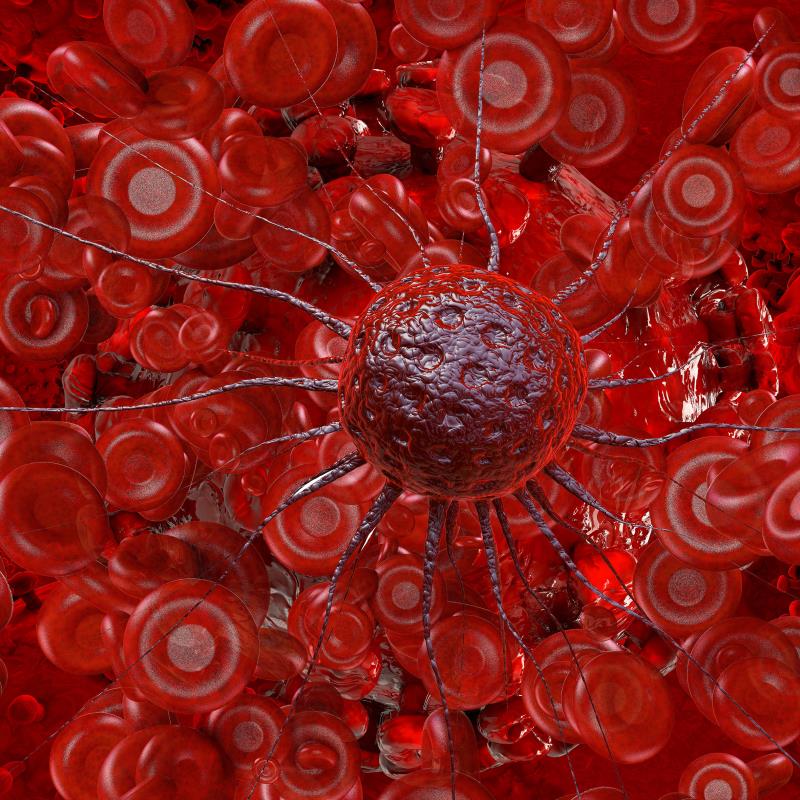
Bleeding in the lower gastrointestinal (GI) tract conferred a high risk of colorectal cancer (CRC) in patients receiving oral anticoagulation (OAC) therapy for atrial fibrillation (AF), a retrospective study has shown, underlining the potential of lower GI bleeding as a marker of CRC.
“[Our findings] provide a strong argument that if blood is detected in the stools of patients [receiving] OACs, this is something doctors should worry about,” said study lead author Dr Peter Vibe Rasmussen from the University of Copenhagen in Copenhagen, Denmark, in a press release.
“[Therefore, despite the frequency of GI bleeding] in AF patients receiving OAC therapy … lower GI bleeding should not be dismissed as a benign consequence of OAC therapy but always examined for a potential underlying malignant cause,” said Rasmussen and his team.
Researchers used data from Danish registers comprising 125,418 AF patients (58 percent male, median age 73 years) initiating OAC therapy. A total of 2,576 cases of lower GI bleeding were identified through 3 years of treatment. Of these, 140 patients earned a subsequent diagnosis of CRC within the first year of having lower GI bleeds. [Eur Heart J 2020;doi:10.1093/eurheartj/ehz964]
The absolute 1-year risk of CRC were 3.7 percent and 8.1 percent among respective participants aged ≤65 and 76–80 years with lower GI bleeds. These rates were higher than those without lower GI bleeds (0.16 percent to 0.53 percent, respectively).
Participants with lower GI bleeds had markedly increased risks of CRC vs those without lower GI bleeds (risk ratio [RR], 24.2, 95 percent confidence interval [CI], 14.5–40.4 [≤65 years] and RR, 12.3, 95 percent CI, 7.9–19.0 [>85 years]).
While the odds of undergoing endoscopy following a lower GI bleed appear favourable among respective participants aged ≤65 and >85 years (60.6 percent and 37.3 percent), these rates also imply that the probability of not undergoing endoscopic evaluation is relatively high, the researchers pointed out. “[This could be due] to the use of a different modality other than endoscopy. [Moreover,] some bleeding episodes [could represent] clinically obvious benign haematochezia. However, potential cases of CRC might have been missed.”
Timing, education are key
Given the potentially higher likelihood of GI bleeds in the future due to increasing AF rates in the ageing population and the associated OAC therapy, [Circulation 2017;135:e146-e603] patients with GI bleeds should always be offered meticulous clinical examination regardless of OAC use or nonuse, noted Rasmussen. “[T]imely examination of anticoagulated patients presenting with clinical signs of lower GI bleeding or possibly subclinical signs (ie, anaemia or positive FOBT*) could potentially provide early detection of a malignant colorectal pathology.”
However, some limiting factors that should be considered when interpreting the findings are the lack of data on risk factors (ie, alcohol consumption, dietary habits, and obesity) and use of claimed prescriptions to evaluate OAC adherence, noted the researchers. “[Moreover,] a diagnosis of lower GI bleeding is not always straightforward. [Our] patients … were either admitted to the hospital or referred to an outpatient clinic by their general practitioner.”
“[Nonetheless,] our study is a reminder that educating and informing our patients is of utmost importance. When patients start taking OACs, we should tell them that if they see blood in their stools, they should always consult their doctor,” said Rasmussen.